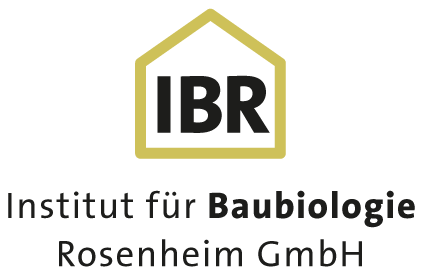

For the assessment of mould contamination and mould infestation, a variety of aspects must be taken into account. It requires a great deal of expertise and a general overview of many ecological, hygienic-microbiological, analytical-diagnostic and medical aspects and their interrelation.
Since there is no universal method for assessing mould infestation, a broad range of techniques are used to enable an optimised, targeted approach. Moreover, the knowledge of relevant guidelines and best practices as well as state-of-the-art laboratory equipment are indispensable means for obtaining meaningful and well-founded results that help determine the cause of a mould infestation. There are many possible ways for germs to get into the indoor air. Numerous moulds, yeasts and bacteria are present in the outdoor air and get inside through open windows and doors. Bacteria and yeasts mainly exist in the soil and are transferred to the indoor air when sticking to soil or dust particles. Many moulds have spores as airborne particles which are ideally adapted to dispersion through the air. Besides the naturally existing “airborne germs”, one must consider the germs introduced by men which are distributed through droplets when speaking or coughing or as abrasions from infected skin or hair particles. Sometimes, bacteria-laden particles are also resuspended in the air from textiles or flooring. The major part of these microorganisms is counted among the so-called environmental germs. In most cases, they are harmless for healthy persons. It may happen, however, that the pathogenic germs are propagated by the indoor air itself. In this case, the germ concentration is of crucial importance. If a threshold concentration is exceeded, the risk for a person to become ill increases considerably. This particularly applies to persons with an impaired defence against infections or a weakened immune system. Hygiene measures contribute to minimise the health risk.
The term “hygiene” is not only restricted to cleanliness, but, in its scientific sense, also covers the effort to prevent diseases as well a to preserve or increase the well-being and vitality of everybody. In addition, the exposure to environmental hazards should be kept as low as possible. Since people spend about 80% of their time inside houses, this is above all applicable for habitable rooms and workplaces. You therefore should aim for a room climate which is ideal from the physiological point of view. In general, it is characterised by room temperatures of 20-22°C and a relative humidity of 50-60%. Germs should not be present in the indoor air.
At workplaces and in large buildings, air conditioning can contribute to achieving and preserving these favourable conditions. But sometimes, it is the air path itself (and even air conditioning) that spreads bacteria and fungi. Among the bacterial germs, actinomycetes, spore-forming bacteria (bacillaceae), cocci, micrococci and cornyebacteria are relevant. As regards moulds, the members of the Cladosporium, Penicillium, Alternaria, Aspergillus, Botrytis genera are most common. Yeast infestations include Rhodotorula sp. and Saccharomyces sp. Some of these microorganisms are harmful germs which can cause infections in persons with a weakened immune system and have an allergenic effect for many people.
Breathing in germs can quickly lead to illness which affects the entire body. Since the lungs are closely connected to the bloodstream, they allow germs to easily spread in the human body or to introduce their metabolites into the blood. However, given that our immune system is also located in the bloodstream, the body can immediately react to such an infection.
A common cause for hygienic problems in air conditioning systems is the microbial contamination of filters due to pollution by dust and the formation of condensation water, which provides ideal conditions for germ growth. The germs are automatically taken in by the outdoor air; under favourable conditions, they can grow through the filter and are then emitted to the indoor air. Regular maintenance and hygiene inspection of air conditioners and their filter systems can minimise the related health risks for the employees and therefore should be carried out in regular intervals. The exchange intervals or the maximum service life of filters is stipulated in the VDI 6022 directive and is 1 year for coarse filters and 2 years for microfilters. Depending on individual needs (extent of soiling, manufacturer recommendations), shorter intervals might be required.
Risk potential
Various moulds or bacteria can have a pathogenic or allergenic effect. However, the numerous types vary in their potential or probability of making people sick. Many species are harmless for healthy people while others can infect even persons in good health. This is especially true for some bacterial germs. These differences result from the specific properties of each species and their metabolic performance.
According to the current Biological Agents Ordinance, microorganisms are classified in risk groups using various criteria. These criteria include:
- Natural habitat and typical distribution
- Production of toxins (endotoxins, exotoxins, mycotoxins)
- Routes of transmission of the germ (mouth, lungs, skin, gastrointestinal tract)
- Incubation period for a possible disease
- Severity and course of a disease (chronic, acute)
- Secondary diseases or sequelae
- Possibilities of diagnosis and treatment (antibiotics)
- Infectiousness of a disease
Known resistance to antibiotics
For bacteria, the risk classifications are quite accurate, as bacterial germs have been studied comprehensively for a long time. In contrast to that, moulds still require more research. The currently applicable risk classifications take no recent research results into account and are often based on the identification of individual fungi species from clinical isolates, i.e. from samples of human tissue. It is known, however, that in infected tissue, moulds present a different appearance and growth behaviour so that identification errors may occur. Recent research results and experience therefore suggest to view some species in a more critical light than their current risk group assignment would suggest. For example, take Aspergillus Niger for which it has been confirmed that it may cause infections of the ear, the lungs and other organs. The current Biological Agents Ordinance, however, classifies Aspergillus Niger as a rather harmless environmental germ of risk group 1.
Although the classification is based on a broad range of criteria, the resulting risk assessment cannot be applied generally to everybody. In particular, it must be emphasised that the classification is mainly based on the infectious potential and not on the sensitising potential. Sensitisation may lead to an allergy which, in turn, may have a strong impact on the body including symptoms of illness. Many personal or individual factors, such as a genetic predisposition, can greatly increase the risk for an individual to become sensitised. It is well-established that persons whose parents are suffering from allergies have a significantly higher risk to develop an allergy themselves. The risk to contract an infection, such as athlete’s foot, is much higher in particular groups of the population, e.g. top athletes, diabetics and smokers, than in the general population. This means that the risk a certain mould presents to an individual person must be ascertained individually in each case.
Four groups of germs are defined as risk groups:
Risk group 1: Germs which are “unlikely” to cause a disease in humans (these also include species that can make persons with a severely weakened immune system sick, or species which are considered to have “only” allergenic potential). Nearly all moulds belong to this group.
Risk group 2: Germs which may cause a disease in humans thus may present a risk to employees; it is unlikely that the germ spreads among the population; effective prevention or treatment is usually possible. This category includes moulds of the Aspergillus Fumigatus and Aspergillus Flavus species.
Risk group 3: Germs which may cause a severe disease in humans and may constitute a serious risk for employees; there may be the risk that the germ spreads among the population; prevention or treatment is usually possible.
Risk group 4: Germs which can cause a severe disease in humans and may constitute a serious risk for; the risk that the germ spreads among the population may be high; effective prevention or treatment is usually not possible.
?Surface tests
Using adhesive film tests, contact samples from surfaces which might be subject to hygienic issues or contaminated are placed on different culture media (DG18 and malt extract agar). The culture media are subsequently incubated in a lab at 25 °C for 5 – 7 days and then assessed (this includes the differentiation of genera and most common species of moulds).
?Airborne germs test
A universal and versatile solution to determine biological substances in the air is the so-called impaction collector. The MBASS 30 model made by Holbach with its LKS30 airborne germ collector head distinguishes itself by the fact that conventional agar plates (culture media) can be placed in a specially designed aluminium case. This ensures high versatility with respect to the choice of culture media so that a meaningful evaluation of the individual problem is possible from a microbiological perspective.
By means of a vacuum pump, a calibrated air flow of 30 l/min is drawn across the agar plates. The sampling head of the impaction collector contains a perforated plate with a certain number of holes of the same diameter, which is used to guide the air volume flow in a controlled manner over the agar plates and to accelerate the particles using air so that the particles are separated according to the inertia principle. The distribution of the holes (323 altogether) ensures that air is uniformly applied to the culture medium. For a collection of airborne germs, the following sample air volumes have been determined depending on the dust load: 50 litres, 100 litres, 200 litres or 300 litres. The decision which air volume to apply to the culture media is made on-site.
The evaluation of the microbiological measurement results (including the differentiation of genera and most common species of moulds) and the expert assessment is carried out in specialised microbiology laboratories.


